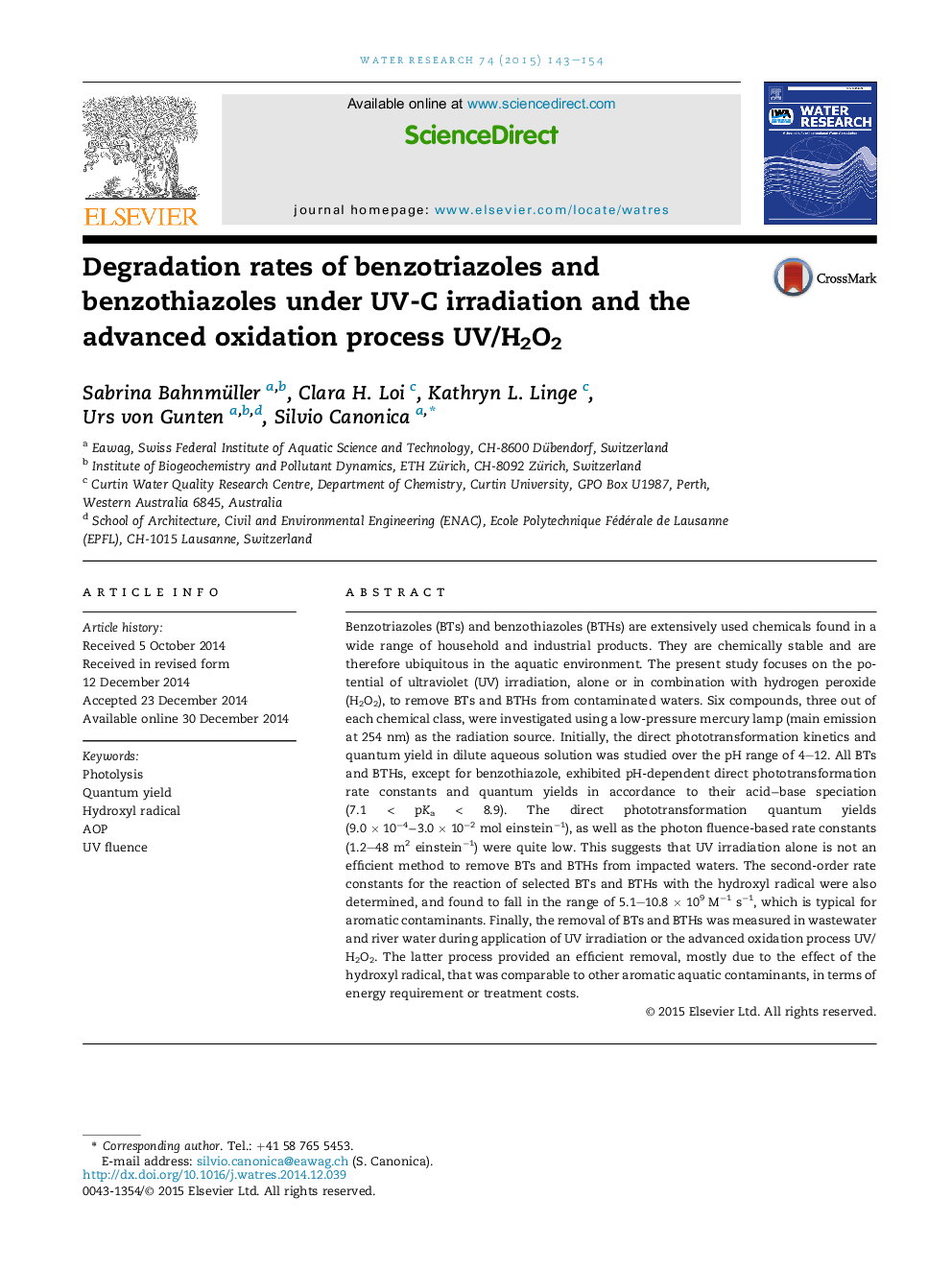| کد مقاله | کد نشریه | سال انتشار | مقاله انگلیسی | نسخه تمام متن |
|---|---|---|---|---|
| 4481272 | 1623094 | 2015 | 12 صفحه PDF | دانلود رایگان |

• Benzotriazoles and benzothiazoles undergo pH-dependent direct photolysis under UV.
• Low photolysis quantum yields prevent efficient elimination solely by UV-C.
• Second-order rate constants for the reaction with hydroxyl radical are high.
• The UV/H2O2 process provides efficient elimination from real waters.
Benzotriazoles (BTs) and benzothiazoles (BTHs) are extensively used chemicals found in a wide range of household and industrial products. They are chemically stable and are therefore ubiquitous in the aquatic environment. The present study focuses on the potential of ultraviolet (UV) irradiation, alone or in combination with hydrogen peroxide (H2O2), to remove BTs and BTHs from contaminated waters. Six compounds, three out of each chemical class, were investigated using a low-pressure mercury lamp (main emission at 254 nm) as the radiation source. Initially, the direct phototransformation kinetics and quantum yield in dilute aqueous solution was studied over the pH range of 4–12. All BTs and BTHs, except for benzothiazole, exhibited pH-dependent direct phototransformation rate constants and quantum yields in accordance to their acid−base speciation (7.1 < pKa < 8.9). The direct phototransformation quantum yields (9.0 × 10−4−3.0 × 10−2 mol einstein−1), as well as the photon fluence-based rate constants (1.2–48 m2 einstein−1) were quite low. This suggests that UV irradiation alone is not an efficient method to remove BTs and BTHs from impacted waters. The second-order rate constants for the reaction of selected BTs and BTHs with the hydroxyl radical were also determined, and found to fall in the range of 5.1–10.8 × 109 M−1 s−1, which is typical for aromatic contaminants. Finally, the removal of BTs and BTHs was measured in wastewater and river water during application of UV irradiation or the advanced oxidation process UV/H2O2. The latter process provided an efficient removal, mostly due to the effect of the hydroxyl radical, that was comparable to other aromatic aquatic contaminants, in terms of energy requirement or treatment costs.
Figure optionsDownload high-quality image (128 K)Download as PowerPoint slide
Journal: Water Research - Volume 74, 1 May 2015, Pages 143–154